Tralee, Co. Kerry
Tralee Poor Law Union was formally declared on the 30th March 1840 and covered an area of 548 square miles. Its operation was overseen by an elected Board of Guardians, 34 in number, representing its 18 electoral divisions as listed below (figures in brackets indicate numbers of Guardians if more than one):
Co. Kerry: Ballinacourty, Ballincushane, Ballinvoher, Ballyduffe, Ballymacelligott (2), Brosna, Castlegregory (2), Castlemain, Castle Island (3), Dingle (5), Dunorlin, Dunquin, Kilgarrylander, Kilgobbin, Kilquane, Minard, Tralee (8), Ventry.
The Board also included 11 ex-officio Guardians, making a total of 45. The Guardians met each week on Wednesday.
The population falling within the Union at the 1831 census had been 84,374 with divisions ranging in size from Dunquin (population 1,363) to Tralee itself (19,772).
The new Tralee Union workhouse was erected on a ten-acre site one mile to the east of Tralee at the north side of Quill Street. Designed by the Poor Law Commissioners' architect George Wilkinson, the building was based on one of his standard plans to accommodate 1,000 inmates. Its construction cost £8,557 plus £1,643 for fittings etc. The workhouse was declared fit for the reception of paupers on 1st September 1842, although did not receive its first admissions until 1st February 1844. The workhouse location and layout are shown on the 1938 map below by which time the site had become St Catherine's Hospital.
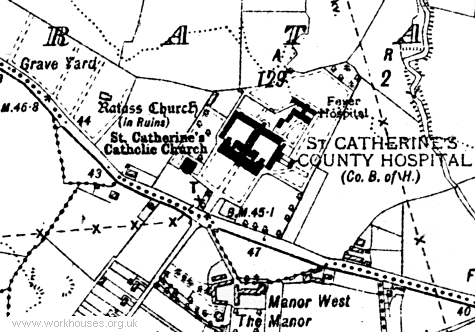
Tralee workhouse site, 1938
The buildings followed Wilkinson's typical layout. An entrance and administrative block at the south contained a porter's room and waiting room at the centre with the Guardians' board room on the first floor above.
The main accommodation block had the Master's quarters at the centre, with male and female wings to each side.
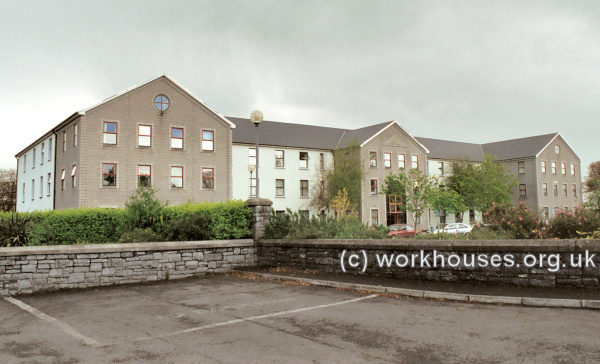
Tralee main building from the south-west, 2002
© Peter Higginbotham.
At the rear, a range of single-storey utility rooms such as bakehouse and washhouse connected through to the infirmary and idiots' wards via a central spine containing the chapel and dining-hall.
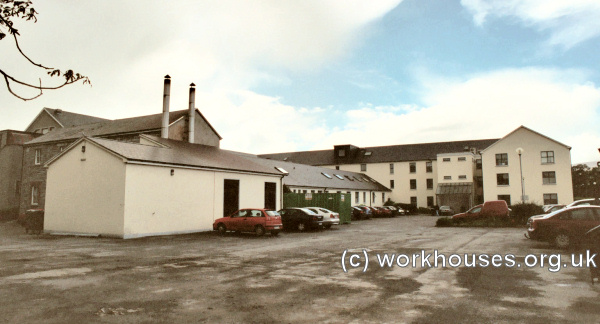
Tralee rear of main block and central spine from the north, 2002
© Peter Higginbotham.
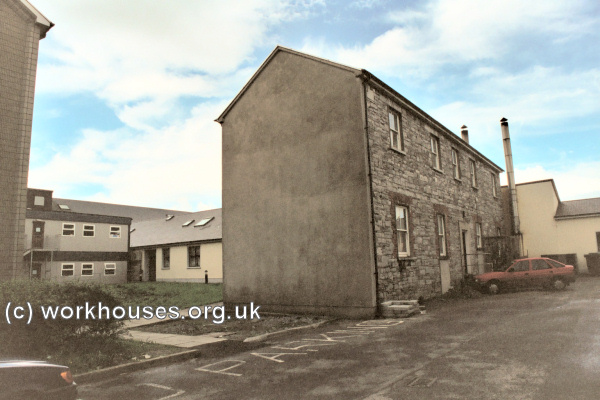
Tralee infirmary block from the east, 2002
© Peter Higginbotham.
A chapel, dedicated to St Catherine, was erected at the west of the workhouse.
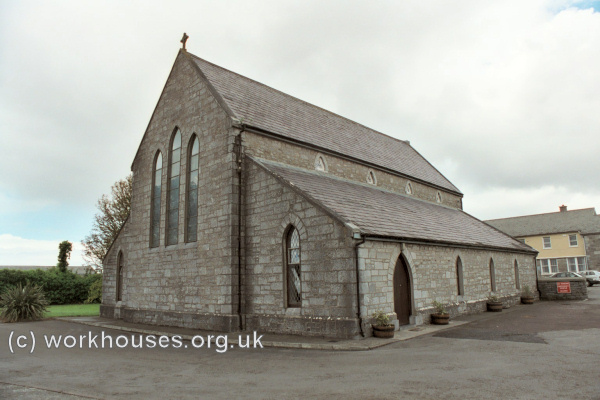
Tralee chapel from the south, 2002
© Peter Higginbotham.
During the famine in the mid-1840s, sleeping galleries and sheds were erected to an additional 186 inmates. A fever hospital to accommodate 60 patients was erected at the north-east of the workhouse.
As elsewhere in Ireland, the famine caused appalling problems both inside and outside the workhouse which was forced to close its doors on any further admissions. Lack of funds also cause the Guardians to withdraw the halfpenny a day it had been providing in outdoor relief to those outside the workhouse. On 5th November 1847, a crowd of destitute people marched on the workhouse carrying a black flag marked "flag of distress". They broke down the entrance gate and only departed after a struggle with police and troops.
In 1848, the western part of Tralee Union separated to form the new Dingle Union.
The former workhouse continued in use as St Catherine's County Hospital until the 1980s. The surviving buildings have now been renovated and are now used as County Council offices.
Records
Note: many repositories impose a closure period of up to 100 years for records identifying individuals. Before travelling a long distance, always check that the records you want to consult will be available.
- Kerry County Library, Moyderwell, Tralee, Co. Kerry. Holdings include Board of Guardians' minutes (1845-1922).
Bibliography
- None.
Links
- None.
Unless otherwise indicated, this page () is copyright Peter Higginbotham. Contents may not be reproduced without permission.


